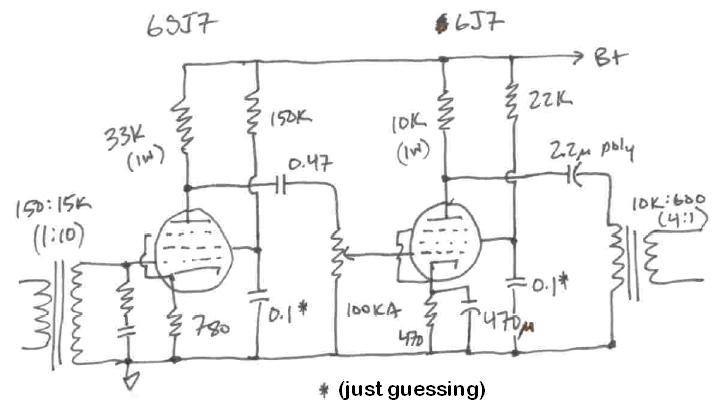blandman74
Well-known member
I figured I would ask around if anyone has seen this kind of design for a mic amp, and if my calculations on the gain, etc., are close. Most of the info I used in putting together the first stage I got from the tech pages at Aiken Amps, esp. here:
http://www.aikenamps.com/FeedbackAmp.htm
But that page does not address using feedback on a pentode stage. I love the sound, to the extent my amateur ears can detect it, of pentode stages, so I wrote this one out:

If I have the gain calculations on this right (open loop it would be over 200 in gain, but with feedback it runs about 51), then it gets a health amount of gain but still uses some feedback to tame noise a little bit. But I still have a lot to learn about noise.
Curious what others think.
http://www.aikenamps.com/FeedbackAmp.htm
But that page does not address using feedback on a pentode stage. I love the sound, to the extent my amateur ears can detect it, of pentode stages, so I wrote this one out:

If I have the gain calculations on this right (open loop it would be over 200 in gain, but with feedback it runs about 51), then it gets a health amount of gain but still uses some feedback to tame noise a little bit. But I still have a lot to learn about noise.
Curious what others think.










